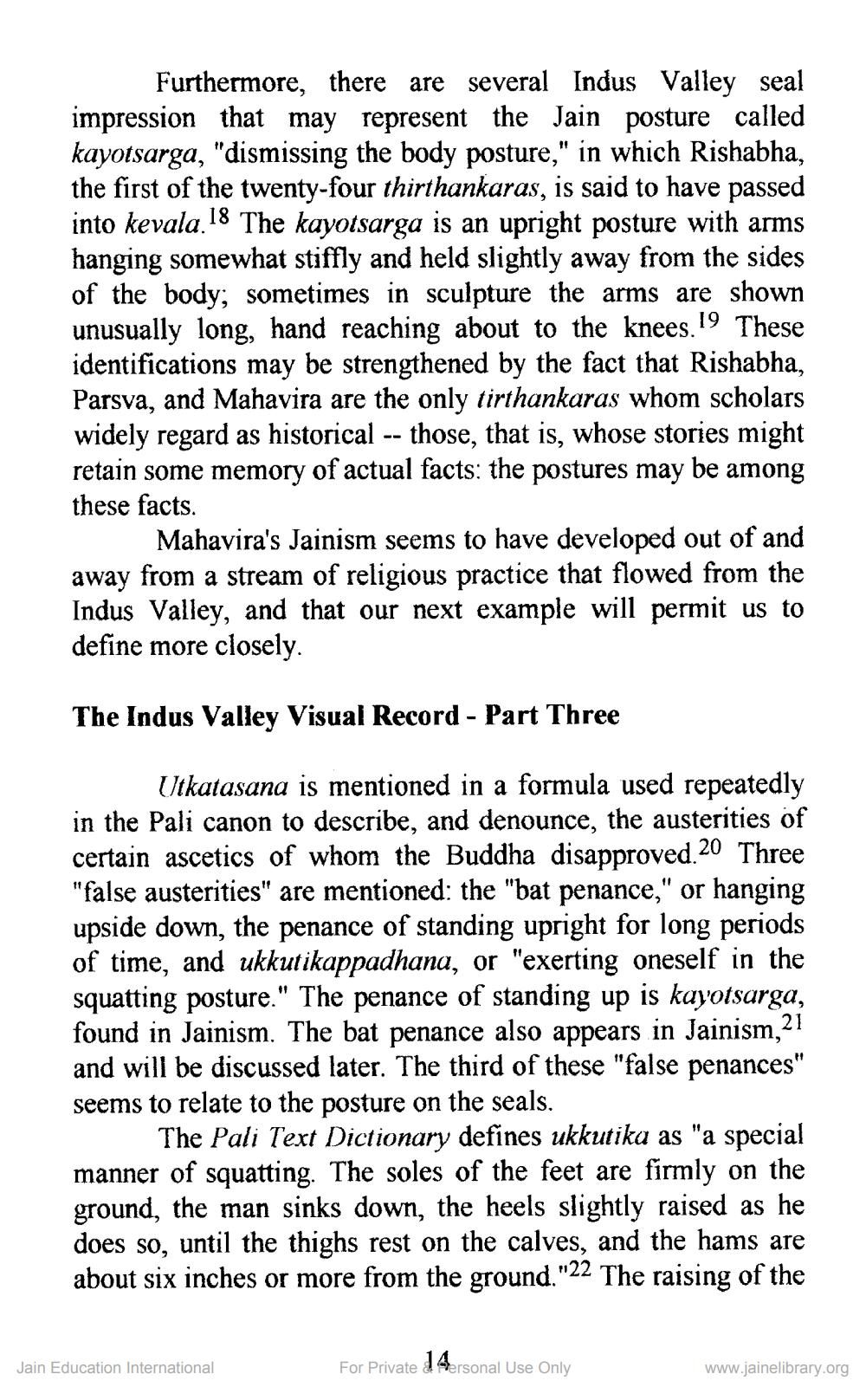________________
Furthermore, there are several Indus Valley seal impression that may represent the Jain posture called kayotsarga, "dismissing the body posture," in which Rishabha, the first of the twenty-four thirthankaras, is said to have passed into kevala. 18 The kayotsarga is an upright posture with arms hanging somewhat stiffly and held slightly away from the sides of the body; sometimes in sculpture the arms are shown unusually long, hand reaching about to the knees. 19 These identifications may be strengthened by the fact that Rishabha, Parsva, and Mahavira are the only tirthankaras whom scholars widely regard as historical -- those, that is, whose stories might retain some memory of actual facts: the postures may be among these facts.
Mahavira's Jainism seems to have developed out of and away from a stream of religious practice that flowed from the Indus Valley, and that our next example will permit us to define more closely.
The Indus Valley Visual Record - Part Three
Utkatasana is mentioned in a formula used repeatedly in the Pali canon to describe, and denounce, the austerities of certain ascetics of whom the Buddha disapproved 20 Three "false austerities" are mentioned: the "bat penance," or hanging upside down, the penance of standing upright for long periods of time, and ukkutikappadhana, or "exerting oneself in the squatting posture." The penance of standing up is kayotsarga, found in Jainism. The bat penance also appears in Jainism,21 and will be discussed later. The third of these "false penances" seems to relate to the posture on the seals.
The Pali Text Dictionary defines ukkutika as "a special manner of squatting. The soles of the feet are firmly on the ground, the man sinks down, the heels slightly raised as he does so, until the thighs rest on the calves, and the hams are about six inches or more from the ground."22 The raising of the
Jain Education International
For Private 14ersonal Use Only
www.jainelibrary.org




